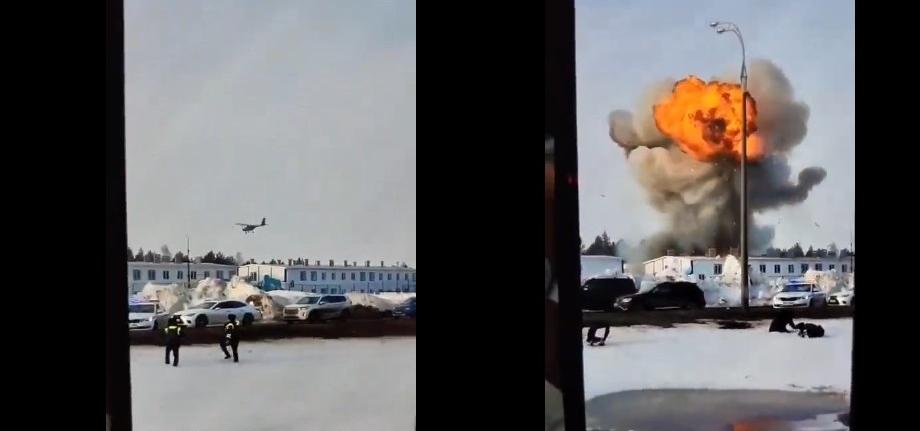In a sharp escalation of its drone campaign targeting strategic industries deep inside Russia, Ukraine seems to have fitted Cessna-style light planes with remote controls, packed them with explosives and flown at least one of them more than 600 miles to strike a Russian factory in Yelabuga, 550 miles east of Moscow.
Ironically, the Russian factory produces—you guessed it—drones.
Russians on the ground recorded the shocking scene as the light plane dove onto the sprawling Alabuga Special Economic Zone industrial campus, where workers assemble Iranian-designed Shahed drones that, just like Ukraine’s DIY Cessna-style drone, can range as far 600 miles with an explosive payload.
The billowing fireball resulting from the drone’s impact—possibly on the Alabuga factory, possibly on an adjacent dormitory for factory workers—speaks to the size of the DIY drone’s explosive payload. A classic Cessna 172 can haul a half-ton load as far as 700 miles.
Ukrainian engineers have developed at least 16 different types of long-range—and presumably satellite-controlled and GPS-guided—strike drone. This year, Ukrainian forces have sortied scores of the drones on one-way missions hundreds of miles into Russia to strike oil refineries and, now, drone-factories.
Strikes on refineries recently have reduced Russian gasoline-production by more than 10 percent. Strikes on factories such as the Alabuga facility likewise could weigh on Russia’s production of its best Shahed long-range drones—but only if Ukraine can sustain its strike campaign.
It should surprise no one that Ukraine seemingly is transforming light planes into drones. Back in 2019, the U.S. Air Force Research Laboratory worked with Virginia-based DZYNE Technologies to modify a Cessna 206 into a drone.
The remote-controlled Cessna “offers the benefits of unmanned operations without the complexity and up-front cost associated with the development of new unmanned vehicles,” said Alok Das, an AFRL scientist.
Beside being cheap, simple and reliable, a light-plane-based drone also has the benefit of being stealthy. Not by virtue of high-tech shaping and coating, but instead by being innocuous.
Remember that, in 1987, a West German teenager flew a Cessna 172 all the way to Moscow and landed in in Red Square. A pair of Soviet fighters briefly vectored toward the Cessna, but at least one radar-operator on the ground logged the plane as “friendly” and subsequently ignored it.
The strike on the Alabuga factory should frighten Russian commanders. They have too few air-defenses both to protect front-line forces and also to protect Russian cities and factories. “You can’t defend everywhere,” retired U.S. Army general Mark Hertling noted.
And where Ukraine’s drone industry is highly decentralized and thus difficult to suppress with air strikes, Russia’s own drone industry is the opposite. It’s centralized. Damningly, one state-sponsored company produces almost all of Russia’s explosive first-person-view drones.
That means that sustained raids by Ukrainian drones on the same handful of Russian facilities could throttle Russia’s drone-production—and hand Ukraine a critical advantage as Russia’s wider war on Ukraine grinds into its third year.

